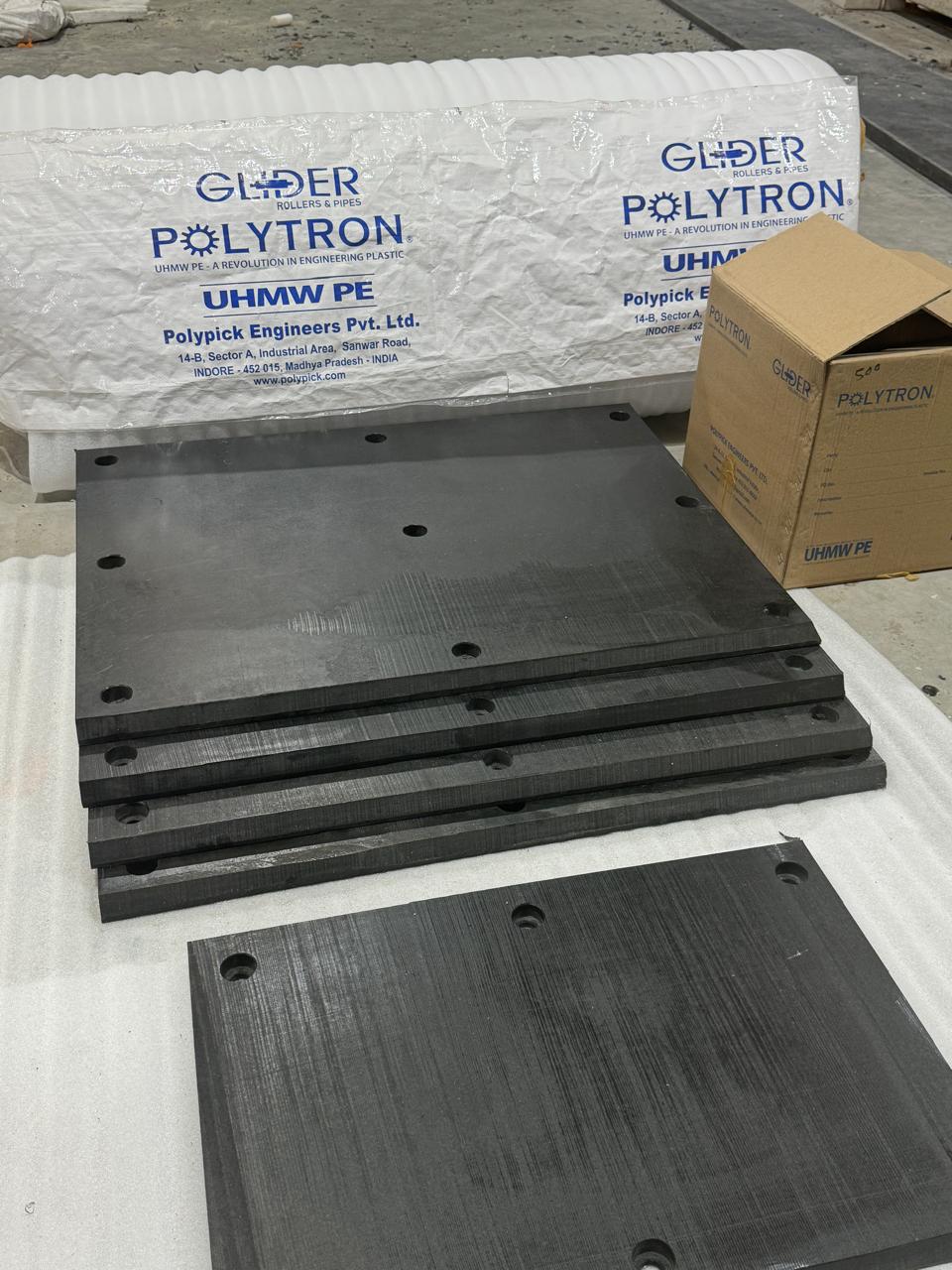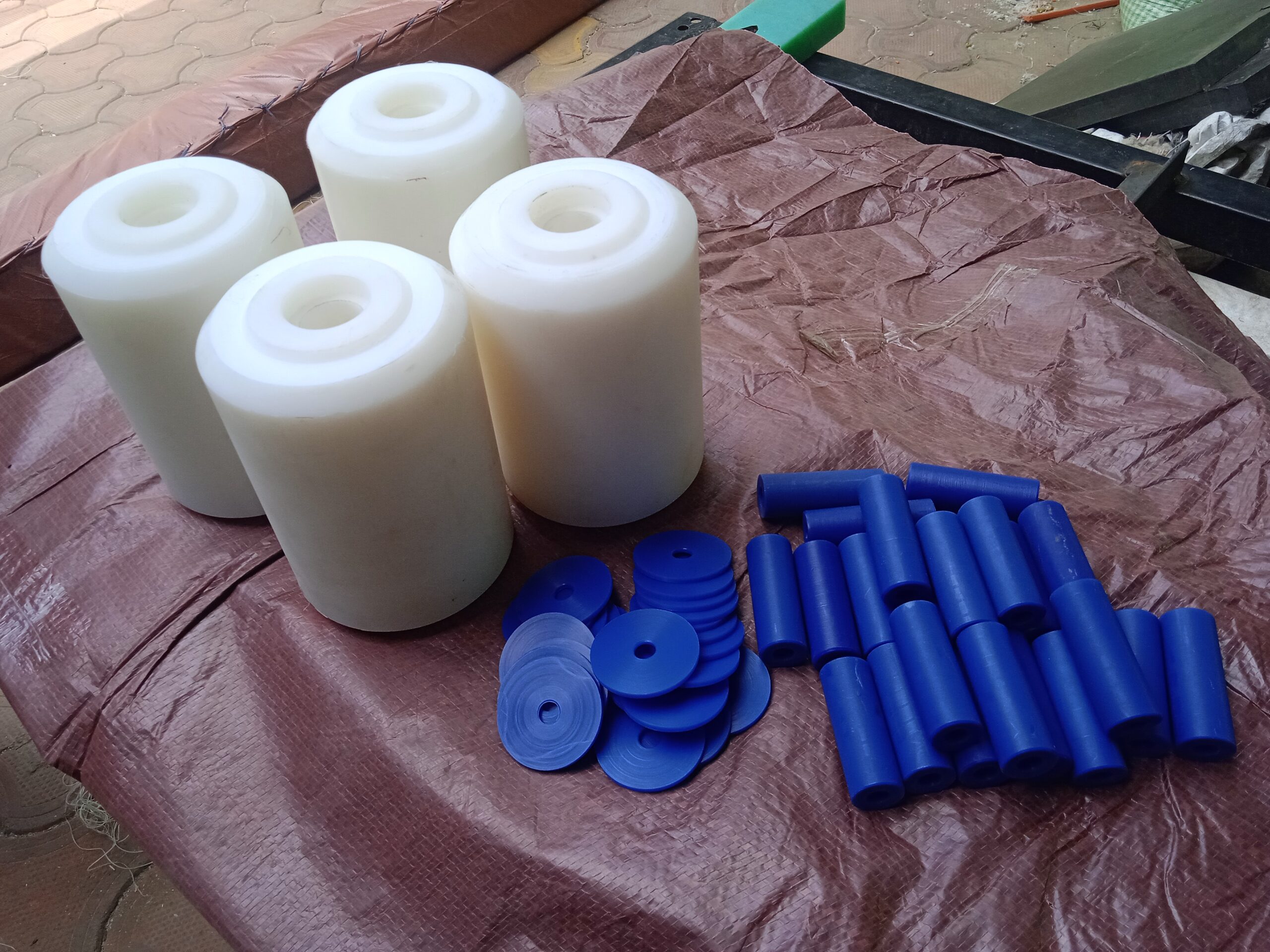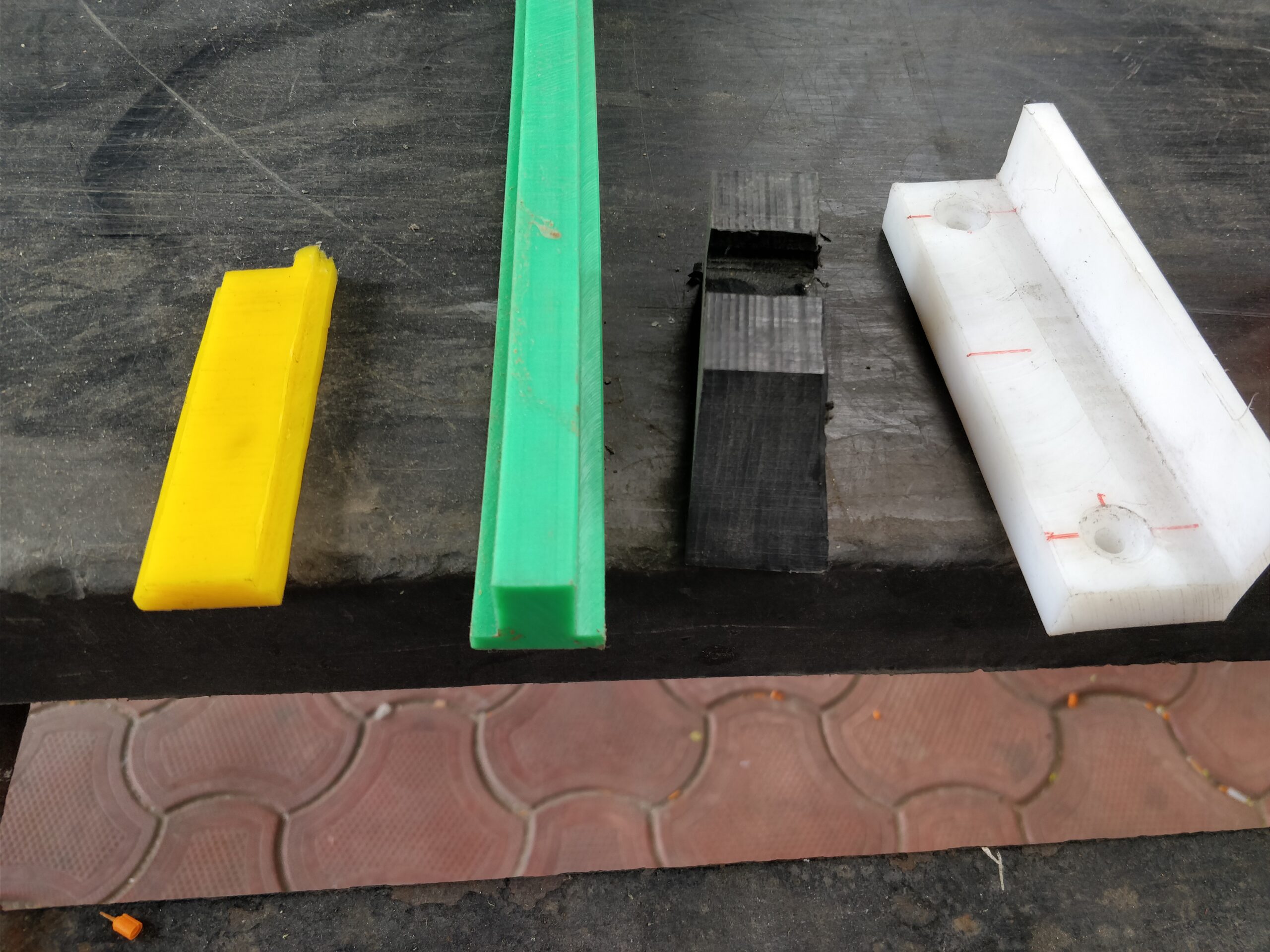Conveyor Industries
UHMW PE profiles are widely used in conveyor systems due to their excellent properties. Here’s an overview of their applications:
1. Guide rails and wear strips:
- Line the sides of conveyors.
- Reduce friction between the belt and frame.
- Prevent belt wandering and misalignment.
2. Return rollers:
- Lightweight alternative to steel rollers.
- Reduce energy consumption and noise.
- Self-lubricating properties extend lifespan.
3. Skirting:
- Used at transfer points and loading zones.
- Prevents material spillage.
- Flexible enough to maintain contact with the belt.
4. Chain guides:
- Used in chain conveyor systems.
- Reduce friction and wear on chains.
- Quieter operation compared to metal guides.
5. Belt scrapers and cleaners:
- Remove residual material from belts.
- Softer than metal, reducing belt wear.
- Can be easily replaced when worn.
6. Impact bars:
- Installed under loading zones.
- Absorb impact from falling material.
- Protect the belt and reduce noise.
7. Slider beds:
- Support the conveyor belt.
- Reduce friction and energy consumption.
- Particularly useful in food-grade applications.
8. Transfer chutes:
- Line chutes to improve material flow.
- Reduce wear and prevent material buildup.
9. Sprocket profiles:
- Used in sprocket-driven conveyors.
- Reduce noise and wear on metal components.
10. Corner tracks:
- Guide belts around bends in the conveyor system.
- Reduce friction and extend belt life.



These UHMW PE profile applications help improve conveyor efficiency, reduce maintenance needs, and extend system lifespan.
UHMW PE profiles come in various shapes and sizes, each designed for specific applications in conveyor systems and other industries. Here are some common types of UHMW PE profiles and their names, along with reasons for their use:
1. U-Channel:
- Name: Also called U-profile or C-channel.
- Reason: Used for edge protection, guiding, and as wear strips on conveyor sides.
2. T-Profile:
- Name: T-bar or T-section.
- Reason: Provides a sturdy guide rail with a wide base for stability and narrow top for guiding.
3. L-Profile:
- Name: Angle profile or L-bar.
- Reason: Used for corner protection and as a guide rail where space is limited.
4. J-Profile:
- Name: J-bar or hook profile.
- Reason: Ideal for hanging or hooking applications, often used in skirting systems.
5. H-Profile:
- Name: H-bar or double-sided T-profile.
- Reason: Provides guidance on both sides, useful for complex conveyor layouts.
6. Flat Bar:
- Name: Rectangular profile or strip.
- Reason: Versatile profile used for wear strips, sliding surfaces, and spacers.
7. Round Bar:
- Name: Rod or cylindrical profile.
- Reason: Used for rollers, bushings, and wear-resistant cylindrical components.
8. Tube Profile:
- Name: Hollow round profile.
- Reason: Lightweight alternative to solid round bars, used for rollers and spacers.
9. Dovetail Profile:
- Name: Trapezoid or wedge profile.
- Reason: Provides a secure fit in grooves, often used for replaceable wear strips.
10. Crown Bar:
- Name: Crowned profile or convex bar.
- Reason: Used on conveyor rollers to help center the belt and prevent wandering.
11. V-Profile:
- Name: V-guide or V-belt profile.
- Reason: Used to keep conveyor belts tracking properly in the center of the system.
12. Custom Profiles:
- Name: Application-specific shapes.
- Reason: Designed for unique requirements in specific industries or machinery.
These profiles are chosen based on factors such as the specific application, load requirements, space constraints, and the type of conveyor system. The versatility of UHMW PE allows for easy machining and extrusion into these various shapes, making it adaptable to a wide range of industrial needs.

